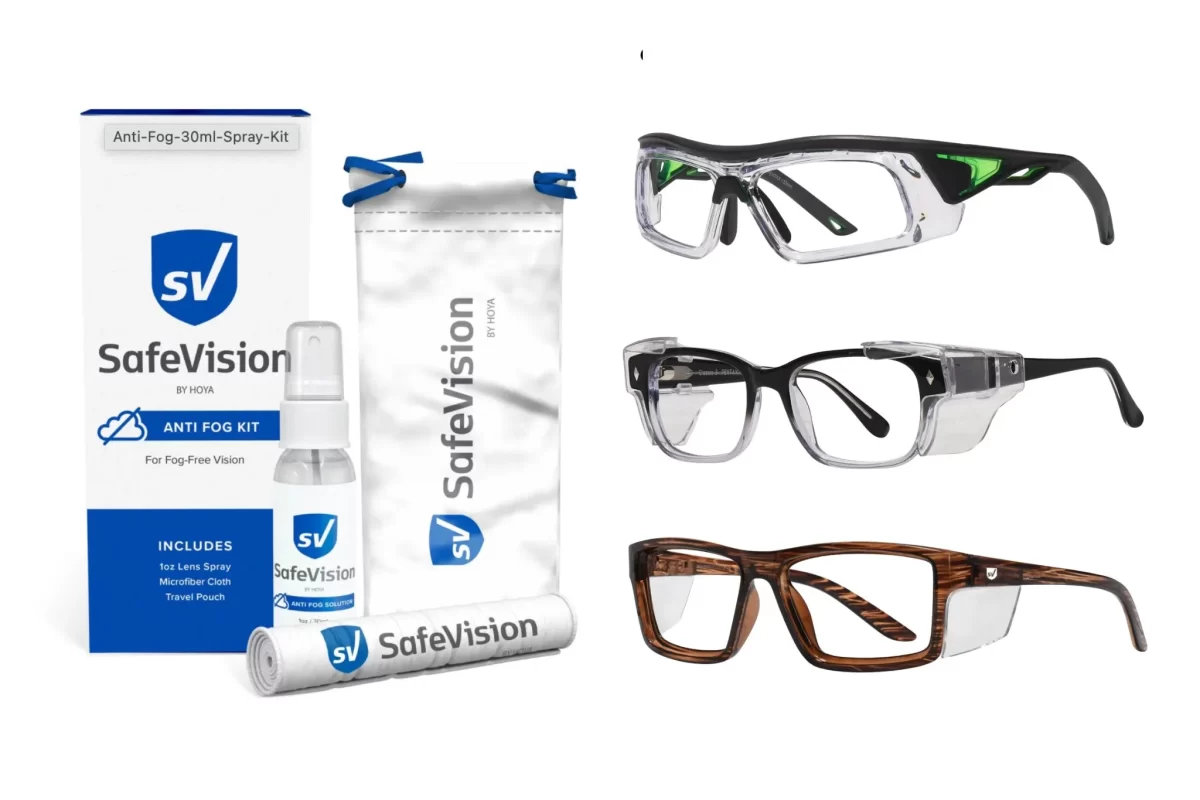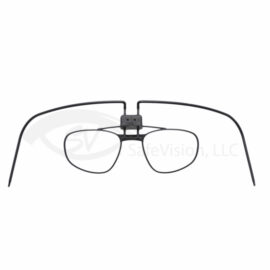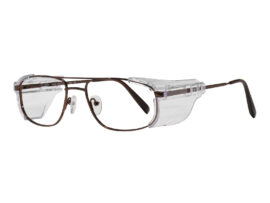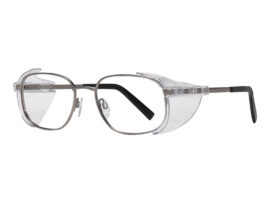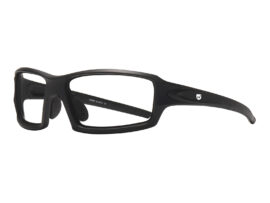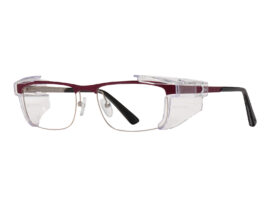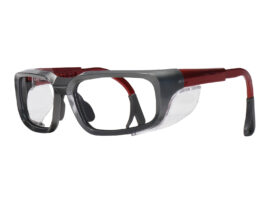Safety Glasses
Tips for Maintaining Prescription Safety Glasses
Prescription safety glasses are a necessary and essential tool that protects your vision in hazardous environments.
According to Prevent Blindness, over 200,000 workplace eye injuries occur annually in the U.S., and up to 90% of these could be prevented through proper eye protection and maintenance. To ensure your prescription safety glasses serve you well, proper maintenance and care are crucial.
By following a few simple guidelines, you can prolong the life of your safety eyewear, maintain clear vision, and safeguard your eyes effectively. Here are a few simple and valuable tips for maintaining prescription safety glasses.
CLEANING YOUR LENSES
Dust, dirt, and smudges can impair vision and strain your eyes. Wipe your lenses daily with a clean, dry microfiber cloth specifically designed for eyewear.
Avoid using tissues or rough materials such as paper towels or your shirt, as they can scratch the lenses.
Rinse your glasses with lukewarm water before gently wiping them to remove any abrasive particles. Regular cleaning not only improves visibility but also helps preserve any protective coatings on your lenses.
AVOID ABRASIVE CLEANERS WHEN MAINTAINING PRESCRIPTION SAFETY GLASSES
Harsh chemicals and abrasive cleaners can damage the protective coatings on your lenses. Stick to mild cleaning solutions specifically sold for eyewear or use lukewarm water with a drop of gentle dish soap.
Avoid ammonia-based cleaners like glass sprays or strong solvents, as these can degrade lens coatings and reduce the impact resistance of your lenses over time.
At SafeVision, we offer Trivex (also known as Phoenix lens material) as an alternative to polycarbonate due to its superior chemical resistance, clarity, and durability, making it an excellent choice for harsh work environments.
PROPER STORAGE
Always store your safety glasses in a sturdy, protective case when not in use.
Avoid placing them in your pocket, where they can be scratched or bent, or leaving them exposed on surfaces like your car’s dashboard, which can lead to warping or coating damage from heat and sunlight.
Proper storage prevents accidental damage and helps preserve lens coatings and extend the life of your eyewear.
REGULAR INSPECTIONS
Perform routine visual inspections of your safety glasses to ensure they remain in optimal condition. Look for signs of wear and tear, loose screws, frame distortion, or any cracks in the lenses.
Addressing small issues early, such as tightening screws or replacing damaged parts, can prevent further damage and help maintain the effectiveness of your eyewear.
If your company provides your prescription safety glasses, it’s important to report any frame damage or lens cracks to your safety manager or supervisor immediately. Even tiny cracks mean the lenses may no longer meet impact resistance standards, putting your eyes at risk.
Tip: Make inspections part of your daily or weekly safety checklist to stay ahead of any issues.
Visit our corporate programs page to learn how we help companies manage prescription safety eyewear procurement efficiently.
ADJUSTING AND MAINTAINING THE FIT
A proper fit is essential for both comfort and eye protection. If your glasses feel loose, sit unevenly, or slide down your nose, have them adjusted by a professional.
Avoid making adjustments yourself, as this can accidentally bend or weaken the frame. Most optical shops—especially those that sell safety glasses—offer free walk-in adjustments.
AVOIDING EXTREME TEMPERATURES
Extreme temperatures can affect the durability and performance of your prescription safety glasses.
Avoid leaving them in your car on hot days, as excessive heat can warp the frame or damage lens coatings.
Similarly, prolonged exposure to freezing temperatures can make the frames brittle and more susceptible to breakage. For long-lasting performance, store your glasses in a controlled environment whenever possible.
REGULAR CHECK-UPS
Schedule regular appointments with your optometrist to ensure your prescription remains accurate. Vision changes can develop gradually, and wearing outdated lenses can lead to eye strain, headaches, and reduced visual clarity, especially in high-risk work environments.
Staying up to date with your prescription not only supports eye health but ensures you remain OSHA-compliant with your safety eyewear.
MAINTAINING PRESCRIPTION SAFETY GLASSES ENSURES SAFETY & DURABILITY
Prescription safety glasses are a vital investment in your personal protective equipment (PPE). With proper care and maintenance, they’ll continue to offer clear vision, protection, and extended durability on the job.
A few small steps, like daily cleaning, proper storage, and avoiding damage, can go a long way toward ensuring your safety glasses perform effectively every day.
If your current pair is scratched, damaged, or outdated, browse our extensive selection at SafeVision.com. Every prescription order includes a microfiber cleaning cloth, care instructions, and a protective pouch or hard case to help you get the most out of your eyewear.
FAQ
It depends on the lens material and coatings. Alcohol wipes may be safe for uncoated lenses, but they can damage anti-reflective or scratch-resistant coatings over time. It’s best to use lens-safe sprays or mild dish soap with water, followed by a microfiber cloth to prevent damage.

